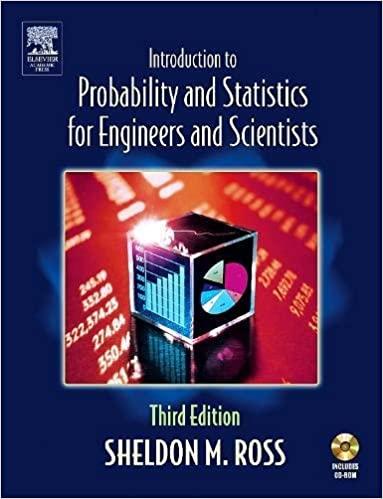28. A red die, a blue die, and a yellow die (all six-sided) are rolled. We are...
Question:
28. A red die, a blue die, and a yellow die (all six-sided) are rolled. We are interested in the probability that the number appearing on the blue die is less than that appearing on the yellow die which is less than that appearing on the red die. (That is, if B (R) [Y ] is the number appearing on the blue (red) [yellow] die, then we are interested in P(B < Y < R). )
(a) What is the probability that no two of the dice land on the same number?
(b) Given that no two of the dice land on the same number, what is the conditional probability that B < Y < R?
(c) What is P(B < Y < R)?
(d) If we regard the outcome of the experiment as the vector B, R, Y, how many outcomes are there in the sample space?
(e) Without using the answer to (c), determine the number of outcomes that result in B < Y < R.
(f ) Use the results of parts
(d) and
(e) to verify your answer to part (c).
Step by Step Answer:

Introduction To Probability And Statistics For Engineers And Scientists
ISBN: 9780125980579
3rd Edition
Authors: Sheldon M. Ross






